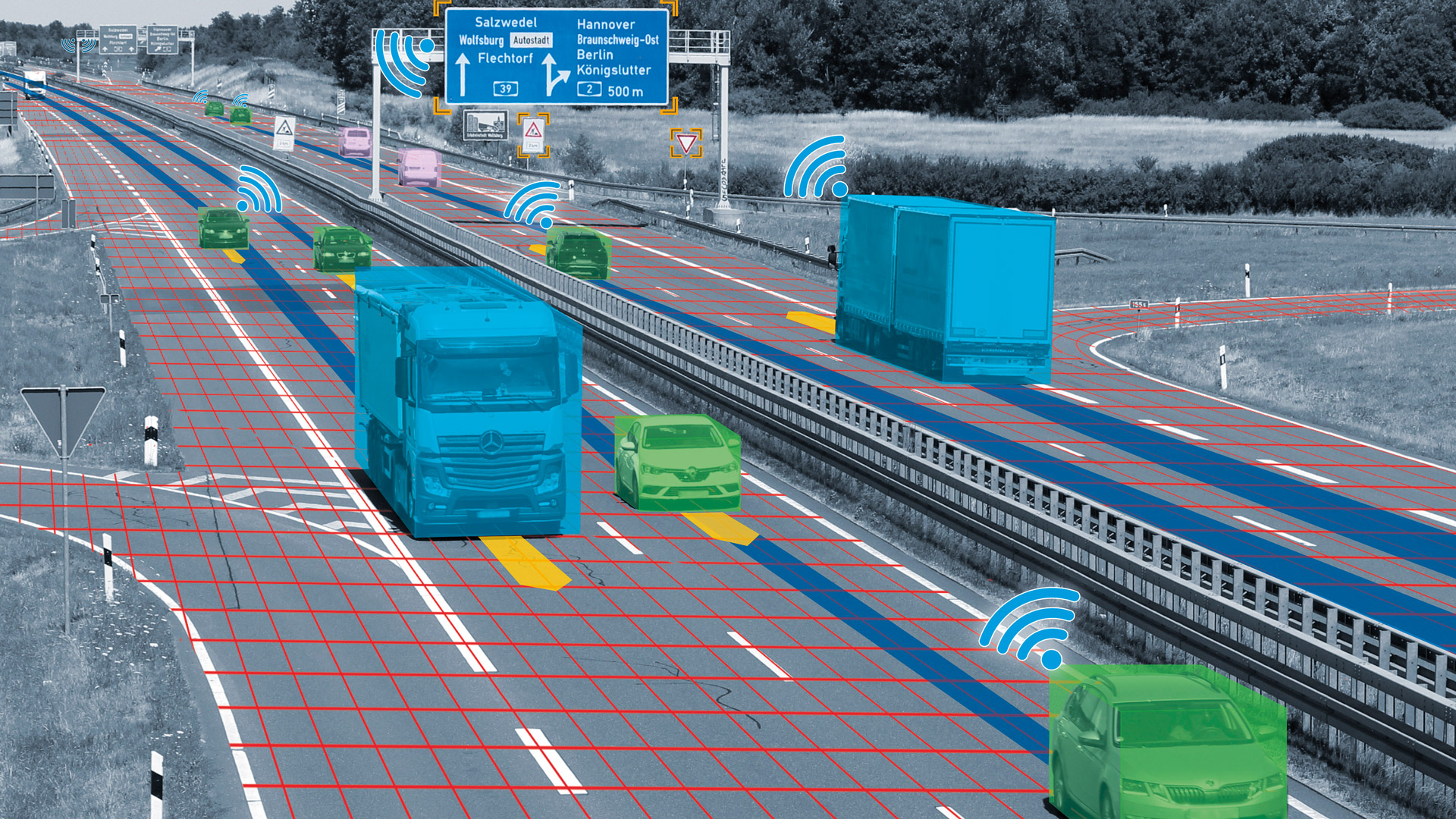Research infrastructure for autonomous and networked driving
The German Aerospace Center (Deutsches Zentrum für Luft- und Raumfahrt; DLR) Test Field in Lower Saxony is a unique research infrastructure for developing and testing technologies for automated and networked driving. Its scope ranges from simulations to test drives with prototypes across some 280 kilometres of roads, including sections on motorways, parts of main and country roads and stretches through Braunschweig city centre.
Putting automated driving on the road, developing new transport services and infrastructure
Scenarios for the introduction of automated and networked vehicles can be simulated, and the effectiveness of new traffic services and intelligent infrastructure can be tested in practice with the help of the test field. DLR, alongside industry and scientific researchers, are able to use the real and simulated environments.
A unique selling point of the Lower Saxony Test Field is its extensive and highly precise communications and monitoring technologies. These consist of camera and sensor systems, which record vehicle positions, driving behaviour and traffic flow. Large volumes of data from different sources, such as from vehicle communications (V2X) and traffic management centres, can be collected and linked together.
Hand in hand – real test drives and simulations
DLR teams are currently developing a tool chain for simulation-based testing. This requires highly automated vehicles to master different traffic situations in the simulation. The test field makes it possible to compare simulations with reality and thus validate them. A ‘digital road twin’ is also in the works.
German Aerospace Center (DLR)
Axel Wodtke · E-Mail axel.wodtke@dlr.de
